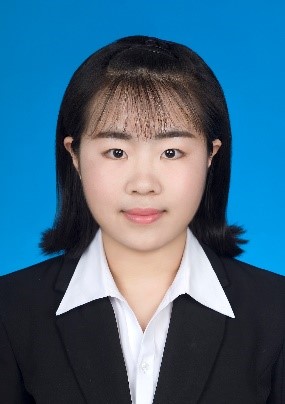张璐 |
| ||||||
女 | 讲师 |
| |||||
研究方向:滑模抗干扰控制理论及其在机电系统中的应用 联系方式:luzhang@tiangong.edu.cn | |||||||
教育经历 —————————————————————————————— | |||||||
2011.09-2015.06 | 河北工业大学 | 自动化专业 | 学士 | ||||
2015.09-2017.06 | 东南大学 | 控制理论与控制工程 | 硕士 | ||||
2017.09-2021.12 | 东南大学 | 控制理论与控制工程 | 博士 | ||||
2019.09-2020.09 | 澳大利亚皇家墨尔本理工大学 | 电气工程系 | 联合培养博士研究生 | ||||
工作经历—————————————————————————————— | |||||||
2021.12-至今 | 天津工业大学控制科学与工程学院 | 讲师 | |||||
近三年主要学术论文 ————————————————————————— [1] Lu Zhang, Zhiyong Chen, Xinghuo Yu, Jun Yang, Shihua Li, Sliding mode based robust output regulation and its application in PMSM servo systems, IEEE Transactions on Industrial Electronics, 2023, 70(2): 1852-1860. (SCI一区) [2] Lu Zhang, Jun Yang, Shihua Li, A model-based unmatched disturbance rejection control approach for speed regulation of converter-driven DC motor using output- feedback, IEEE/CAA Journal of Automatica Sinica, 2022, 9(2): 365-376. (SCI一区) [3] Lu Zhang, Jun Yang, Shihua Li, Xinghuo Yu, Invariant manifold based output-feedback sliding mode control systems with mismatched disturbances, IEEE Transactions on Circuits and Systems II, Express Briefs, 2021, 68(3): 933-937. (SCI二区) [4] Lu Zhang, Zuo Wang, Shihua Li, Shihong Ding, Haibo Du, Universal finite-time observer based second-order sliding mode control for DC-DC buck converters with only output voltage measurement, Journal of the Franklin Institute, 2020, 357(16): 11863-11879. [5] Jun Yang, Xinghuo Yu, Lu Zhang, Shihua Li, A Lyapunov-based approach for recursive continuous full-order nonsingular terminal sliding mode control, IEEE Transactions on Automatic Control, 2021, 66(9): 4424-4431. [6] Lu Zhang, Jun Yang, Continuous nonsingular terminal sliding mode control for nonlinear systems subject to mismatched terms, Asian Journal of Control, 2022, 24(2): 885-894.
| |||||||
授权主要发明专利—————————————————————————— [1]杨俊,张璐,吴晗,李世华,王翔宇,一种直流电机的驱动-调速一体式约束模型控制方法,专利号:ZL201711056038.0 [2] 李世华,王佐,杨俊,张璐,戴忱,李奇,一种直流降压变换器的连续滑模无电流传感控制方法,专利号:ZL201710232499.2 [3] 杨俊,吴超,李奇,张璐,一种伺服系统非线性弱磁控制方法,专利号:201910031361.5 [4] 杨俊,吴超,李奇,张璐,一种伺服柔性负载新型速度控制方法,专利号:201910103309.6
| |||||||
